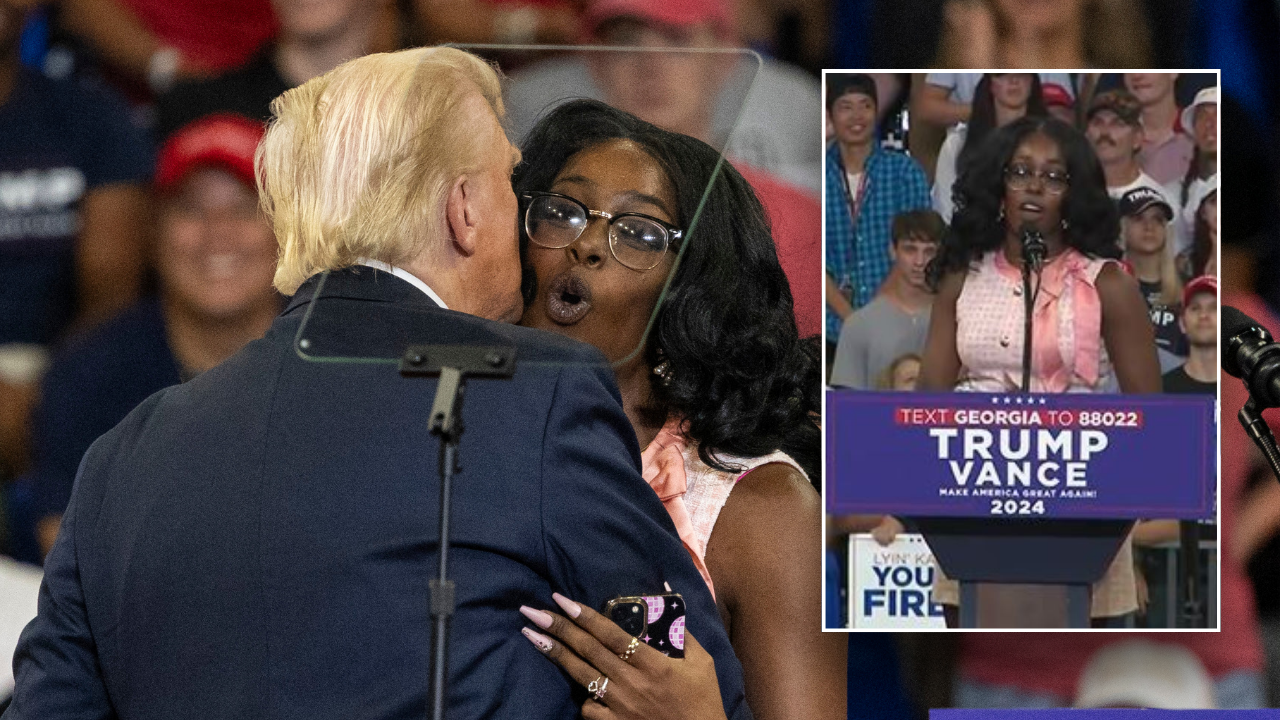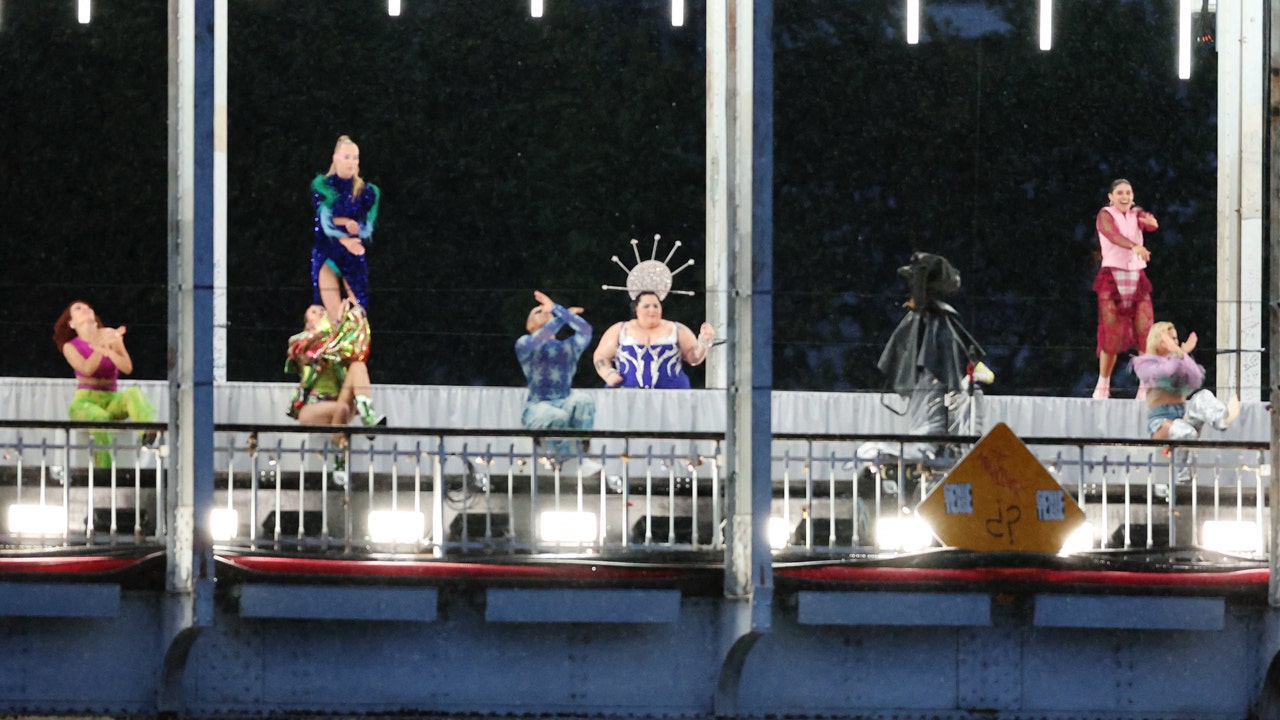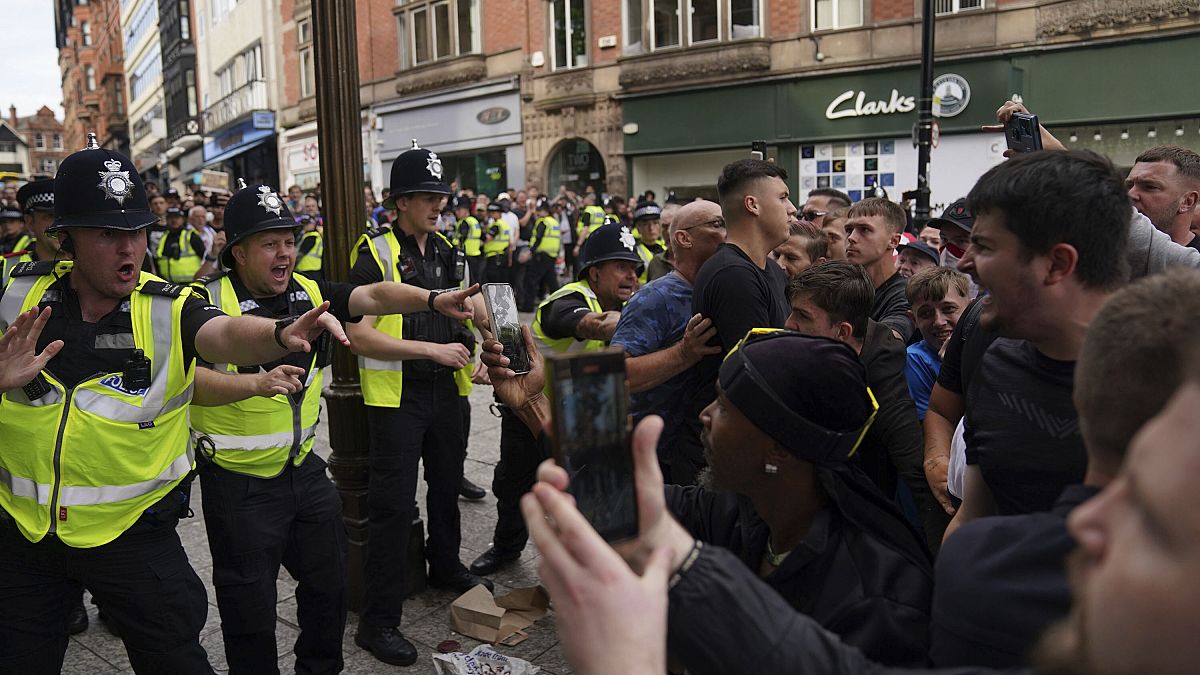North Carolina
After long legal battle, voter ID arrives in NC. But could it be gone again by 2024?

After a decade of false starts — and millions of dollars spent fighting over the issue at the ballot box and in the courtroom — North Carolina voters are now required to show photo identification to cast a ballot in person.
The new voter ID requirement is a victory for conservatives. They’ve pushed for stricter voting laws, saying rules like voter ID are needed to improve voters’ faith that elections aren’t being rigged. Such concerns have skyrocketed among Republicans in recent years due to former President Donald Trump’s false claims of election fraud.
It’s also a setback for progressives and civil rights activists. They say the law isn’t actually intended to fight voter fraud, which is rare already. Instead, they say, it’s being put in place to make voting harder for poor people, minorities and college students — all of whom tend to support Democrats.
“Five years ago, North Carolinians made it clear that they supported enshrining in our constitution a requirement to show a photo ID to vote,” said Sen. Paul Newton, R-Cabarrus, a chairman of the state senate’s election law committee. “Since then, far-left activists and their allies in the executive branch have tried everything to stop this commonsense measure from becoming a reality.”
North Carolina’s first attempt at voter ID, in 2013, was ruled unconstitutional — one piece of a broad set of election law changes that federal courts found Republican lawmakers had written to intentionally discriminate against Black voters.
State lawmakers tried again in 2018, as Newton referenced, asking voters to add an ID requirement to the state constitution. Voters agreed, and the voter ID amendment passed in 2018 with 55% support. But it had been held up in court. Then, earlier this year, the North Carolina Supreme Court signed off on voter ID, reversing the court’s own decision from just a few months prior that had found voter ID to be racially discriminatory and unconstitutional.
That judicial flip-flop coincided with the elected Supreme Court’s majority shifting from Democrats to Republicans. It allowed voter ID rules to go into place starting Thursday, when the first city council races of 2023 began.
How voters are reacting so far
Voter ID’s critics fear it could lower Black voter turnout, potentially hurting Democrats’ chances in future elections while also continuing the state’s history of disenfranchising minorities. In North Carolina, 98% of Black voters are either registered as Democrats or are unaffiliated.
Past studies have shown that even though most people do have photo identification, people who lack IDs are disproportionately Black — and, particularly, tend to be older Black residents. Many of the people who cast the state’s very first ballots using the new voter ID rules fit that exact demographic, and several told WRAL they didn’t mind the new rules.
“They need to make sure you are who you say you are,” said William Richardson, one of the first 10 people to cast a ballot in Sanford’s ongoing city council primary.
Another Sanford Democrat and early voter, Tennessee Richmond, has a long history of participating in local elections. She also said she had no problems adjusting to the new process.
“No, no, it was just fine,” she said.
Jane Rae Fawcett, the Lee County elections director who’s in charge of overseeing that Sanford primary, said she has been talking about voter ID in recent weeks to the local newspaper and radio stations, to try to raise awareness. She said she didn’t anticipate any problems for now; the tiny county’s only early voting site is at the county elections office, so all the experts will be just a few feet away in case any issues do crop up in the coming days.
“If we have any problems, we should be able to handle those pretty quickly,” she said. “And I don’t think there will be, since these days most people have ID.”
It’s more complicated in Charlotte, the state’s biggest city and the only other place with an election happening right now. There are more elections on the ballot, more people expected to show up to vote, and 10 early voting sites for election officials to monitor — not just one.
Michael Dickerson, the Mecklenburg County elections director, told WRAL before voting started that he planned to ramp up staffing more than normal so that more poll workers get experience with the new rules, ahead of the busier elections this fall and beyond.
“We are probably a little heavy for this primary in terms of workers, but the idea is to make certain our workers are comfortable with the changes,” he said.
And once voting started Thursday, he said late in the day, things had gone smoothly.
“No problem today, and no issues with the photo ID,” Dickerson said.
Other places around the state that don’t have elections at the moment are nevertheless working on making sure everyone who needs an ID has one. All county election offices will make free photo IDs for local voters during regular business hours. The Wake County Board of Elections decided to open its office for outside of normal hours to help people who don’t have time to come by during a weekday.
Lawsuits not done yet
Although Republicans have now won the main state-level lawsuit against voter ID, there’s still a federal lawsuit moving forward, filed by the NAACP and other civil rights groups. And more could be filed if problems arise now that voter ID is actually being used.
Irving Joyner, a professor at North Carolina Central University’s law school and longtime NAACP attorney, said they’re hoping to see things move faster in their federal lawsuit now that the 2024 elections are imminent. The two sides are currently fighting over what evidence should be allowed at trial, but court records indicate that a ruling should be made soon.
Once that’s settled, the next fight could be over when to hold the trial — a consequential decision. If the NAACP wins and voter ID is ruled unconstitutional yet again, it would matter a great deal whether that ruling comes before or after next November’s presidential election.
“We have sought to provide the judge with a schedule that will get us into trial in the early part of 2024 to give the judge plenty of time to consider the evidence that we are presenting,” Joyner said. “… But you never know. The state is trying to string it along, out until after the 2024 election.”
The money spent on the numerous voter ID lawsuits over the years, by activist groups and North Carolina taxpayers alike, is well into the millions of dollars.
It may seem a large sum for an issue that affects only a small number of people without IDs. But elections in this swing state can come down to the slimmest of margins. So even changes that affect only a small number of potential voters could still have big consequences.
The 2016 governor’s race was decided by just 0.2% of the vote. The 2020 election for Supreme Court Chief Justice was even closer, with the two candidates separated by just 400 votes out of more than 5.4 million total ballots cast.
How we got here, and what’s next
The push for voter ID in North Carolina started in Washington, D.C., in 2013 when the U.S. Supreme Court’s conservative majority overturned a key part of the Voting Rights Act of 1965.
The Shelby County v. Holder ruling in June 2013 stripped away the federal government’s power to preemptively stop election laws being proposed in states, including North Carolina, that have long histories of racist voter suppression.
Just one month later, North Carolina’s Republican-led state legislature passed a massive package of new election laws that included a voter ID requirement, as well as cuts to early voting. Republican Gov. Pat McCrory signed it into law, calling the new rules “common sense reforms.”
But a lawsuit by civil rights groups uncovered evidence that GOP lawmakers had a racial breakdown of data such as which types of IDs people had, or when they voted.
The legislature used that data to write the law so that it cut the days of early voting Black voters used most — and, for voter ID, to allow the types of IDs that white people were more likely to have but to disallow the types of IDs that Black people were more likely to have.
Legislative leaders admitted doing so in their court filings. But they argued that their racial targeting should be allowed. They said they wanted to disenfranchise Black voters not for racist reasons, but to give the GOP a political edge, since Black people vote disproportionately for Democrats.
The U.S. Court of Appeals for the Fourth Circuit was not swayed by that argument, calling the legislature’s actions “as close to a smoking gun as we are likely to see in modern times” of racism guiding a state’s election laws. It struck down the law as unconstitutional.
That ruling came down in 2016. Almost immediately GOP state lawmakers began working on a new voter ID law, which they said was more lenient and should be able to pass legal muster. Voters gave them the green light in 2018 by approving the voter ID constitutional amendment, and the new law passed — that time even winning the support of a small number of Black Democrats in the legislature.
Fast forward to 2023, and not only is voter ID in use but Republican lawmakers are forging ahead with yet more changes to election law. One proposal, Senate Bill 747, would grant more rights to partisan poll observers and would also make it harder for people to vote by mail. Just like with voter ID, conservatives say it’s needed to improve election integrity and liberals say the real goal is to disenfranchise likely Democratic voters.
Democratic Gov. Roy Cooper vetoed it Thursday.
“This legislation has nothing to do with election security and everything to do with Republicans keeping and gaining power,” he wrote in announcing his veto. “It requires valid votes to be tossed out unnecessarily, schemes to restrict early voting and absentee ballots, encourages voter intimidation and attempts to give Republican legislators the authority to decide contested election results.”
Republicans, however, have enough votes to override his veto and pass the bill into law anyway. They’re likely to do just that, and Newtown — the lead Senate elections official — slammed Cooper for his rhetoric on that bill, voter ID and other election-related fights between their two parties in the leadup to 2024.
“At a time when Gov. Cooper and other Democrats are sowing distrust in our elections process, I believe finally implementing photo voter ID requirements will help boost voter confidence,” Newton told WRAL.
One thing is certain: If SB 747 becomes law, it’s likely to face legal challenges just like the ones that held up voter ID for years. Joyner said the NAACP and others are already planning on how to respond once the legislature overrides Cooper’s veto.

North Carolina
Tropical Storm Debby expected to bring rainfall to Virginia & North Carolina

Tropical Storm Debby already has parts of Florida under tropical storm warnings. The Florida Big Bend is currently under a Hurricane Warning. Debby is forecast to briefly strengthen into a category 1 hurricane as it moves over the Gulf of Mexico where water temperatures are near 90 degrees.
As it continues its path over land it is expected to dial back to tropical storm strength as it reaches the Carolinas mid to late next week. Moderate rainfall is possible for northeast North Carolina and southern Virginia by the end of the week.

Higher amounts of rain are possible for southernmost portions of the Outer Banks but generally models show 2-4 inches for northeast North Carolina and 1-2 inches for southern Virginia through Thursday.
Stay with News 3’s First Warning Weather Team for the latest updates as the storm develops.
North Carolina
Tropical weather update for Wilmington: What we can expect and when

The National Hurricane Center continues to monitor a tropical depression over Cuba. It’s expected to become a tropical storm later Saturday, bringing impacts to the Carolinas around the middle of next week.
Heavy rainfall and flooding are the primary impacts expected, according to the National Weather Service in Wilmington.
“Gusty winds are also possible, but it is too early to predict specific impacts in great detail at this time,” the weather service said.
At the same time, there is the potential for heavy rainfall and some flooding associated with front expected to stall inland this weekend.
As of 11 a.m. Saturday, the center of the tropical depression, which would be name Debby if it becomes a tropical storm, was over Cuba and moving west-northwest near 15 mph. The hurricane center said a turn toward the northwest is forecast for Saturday, followed by a northward motion on Sunday and then a slower northeastwardmotion Sunday night and Monday.
Maximum sustained winds were near 35 mph. Slow strengthening is expected throughout the day Saturday. Faster strengthening is possible Sunday, with the storm nearing hurricane strength when it reaches the Florida Gulf Coast, the hurricane center said.
STORM TRACKER: Monitor the latest tropical developments here.
Here’s a look at what we can expect in the Wilmington area, according to the latest briefing from the National Weather Service in Wilmington.
Wind
The probability of tropical storm force winds has increased, especially for the South Carolina coast. The most likely time of arrival of for northeast South Carolina is Tuesday night into Wednesday morning, and for Southeastern North Carolina is during Wednesday morning.
Rain
The potential for significant rainfall exists with 8 to 12 inches possible from near Cape Fear to portions of thenortheast South Carolina coast. Flash flooding and urban flooding are possible. Some rivers, including the North Cape Fear River and the Waccamaw River, could exceed flood stage next week.
INTERACTIVE MAP: Enter your address to see hurricanes, tropical storms that have passed nearby
Marine impacts
Rough surf, including dangerous rip currents, and hazardous marine conditions are expected this weekend and will persist into the upcoming week.
Are you prepared for a hurricane?
Hurricane season runs from June 1 to Nov. 30. Even if this system won’t pose a threat to the NC coast, it’s never too early to be prepared.
GET READY: Are you prepared for a hurricane? Here’s what to know if you live in the Wilmington area.
North Carolina
Tropical Depression Four forms on its way to the Gulf of Mexico

As of the 5 AM update Friday, Tropical Depression Four has formed. Areas along the East Coast including North Carolina need to continue monitoring this system. Winds are at 30 MPH and gusts are up to 40 MPH. The pressure dropped to 1009 mb and is moving to the west at 16 mph. TD 4 is expected to become Tropical Storm Debby over the weekend. Tuesday night and Wednesday are First Alert Weather Days due to the threat to ENC from this system but we may need to adjust the timing as we get closer.
It’ll move slowly before escaping to the north next week. As it moves up the East Coast, there’s a lot more uncertainty about the track and threats. We expect the track of this system to change through the weekend and even into next week. If ENC sees impacts from this system, they’d likely come mid-week. The longer this system stays over land, the weaker it’ll be. It’ll have the chance to strengthen if it moves back over open water, especially if it moves over the warm waters of the Gulf Stream.
The speed of this system is just as important as the strength. The quicker it moves through, the less rain piles up. If it slows down or stalls, higher rainfall amounts would be expected. Our river levels have dropped a bit since July’s wet weather, but levels are still higher than what you’d find in a typical August.
This is a reminder that we are heading into the heart of the hurricane season and to make sure your emergency supplies are ready.
Stay with WITN and WITN.com as we continue to track this system over the coming days and monitor the 2024 Atlantic hurricane season.
Copyright 2024 WITN. All rights reserved.
-

 Mississippi4 days ago
Mississippi4 days agoMSU, Mississippi Academy of Sciences host summer symposium, USDA’s Tucker honored with Presidential Award
-

 World1 week ago
World1 week agoTyphoon Gaemi barrels towards China’s Fujian after sinking ship off Taiwan
-

 Politics7 days ago
Politics7 days agoRepublicans say Schumer must act on voter proof of citizenship bill if Democrat 'really cares about democracy'
-
World6 days ago
More right wing with fewer women – a new Parliament compendium
-

 News1 week ago
News1 week agoVideo: Kamala Harris May Bring Out Trump’s Harshest Instincts
-

 News1 week ago
News1 week agoWho Can Achieve the American Dream? Race Matters Less Than It Used To.
-

 Politics1 week ago
Politics1 week agoTrump announces to crowd he 'just took off the last bandage' at faith event after assassination attempt
-

 World7 days ago
World7 days agoIsrael says Hezbollah crossed ‘red line’, strikes deep inside Lebanon




/cdn.vox-cdn.com/uploads/chorus_asset/file/25403272/STK465_VIDEO_GAMES_EMULATOR__CVirginia_C.jpg)













